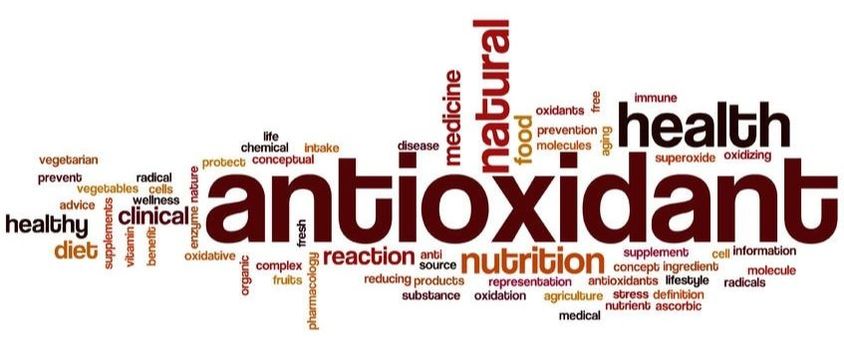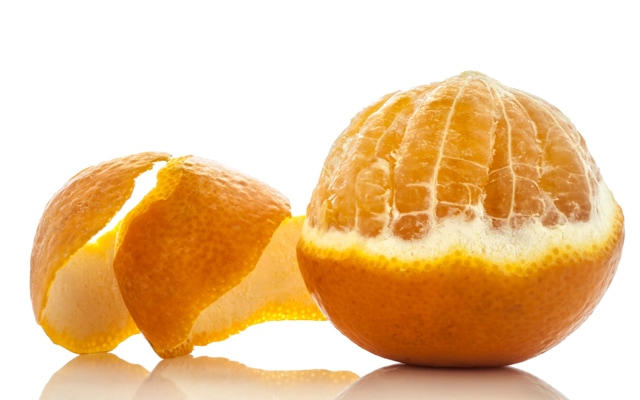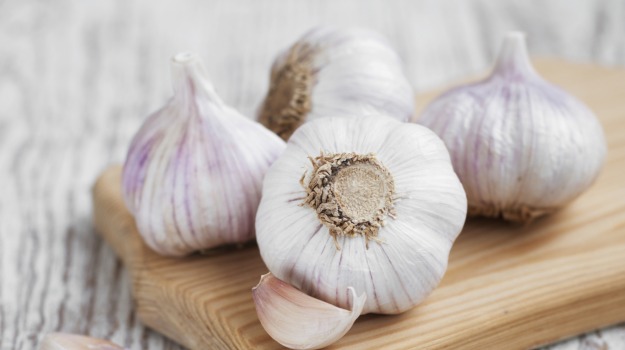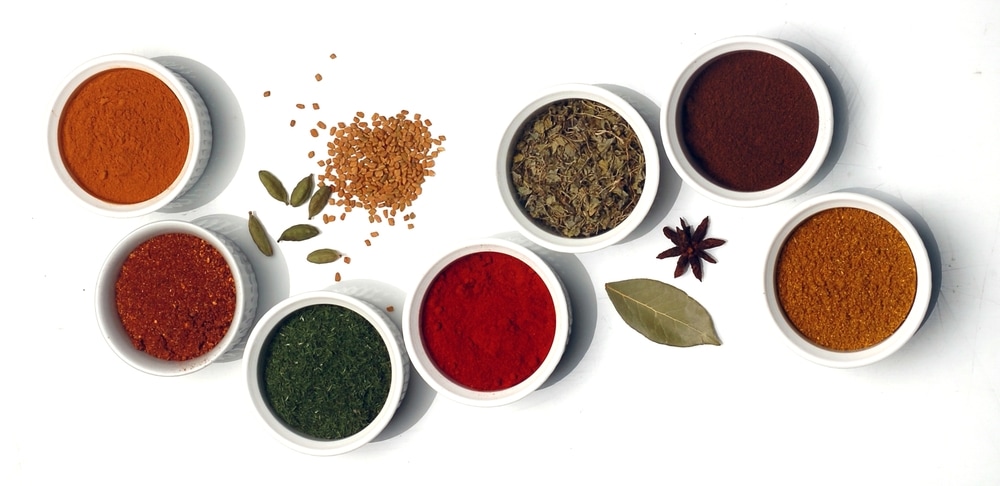|
When the word berry is mentioned, blackberries, blueberries and raspberries come to mind. But a prized berry that has been used for thousands of years to rejuvenate and revitalize the senses, schisandra contains several vitamins and flavonoids that possess antioxidant and immune-boosting properties. It is considered an energy tonic that enhances both physical endurance and mental concentration and at the same time soothes the nerves, taking the edge off anxiety. As a beauty treatment, schisandra is said to promote radiant skin tone. It has been used as an adjunct support for immune function in patients undergoing chemotherapy and helps to protect the liver and kidneys.
2 Comments
Alpha Lipoic Acid plays the key role of converting our food into cellular energy. Alpha Lipoic Acid is a very special compound because, unlike other antioxidants, which only work in either water or fatty environments, this one functions in both. When the body uses up vitamins C and E during times of stress, Alpha Lipoic Acid converts the by-products into new antioxidant compounds, thus “recycling” the vitamins. This nutrient prevents the type of nerve damage seen in diabetes and aging-related ailments such as Parkinson’s and Alzheimer’s Diseases; it also helps ward off cancer, cardiovascular disease, cataracts, and diabetes.
Due to the chemical assaults of the world we live in, most people’s livers are overburdened by chemical overload and function sluggishly. Artichoke to the rescue! This delicious vegetable is also a potent liver protector due to a flavonoid called silymarin, the same compound found in milk thistle. Silymarin has strong antioxidant properties, and studies on animals indicate that it may protect against liver toxicity and cancer. So next time it’s in season, steam and eat a couple of artichoke flowers to keep your liver filtering healthily along.
Conventional meat, poultry, and dairy products contain high amounts of pesticides, hormones, and antibiotic drugs that are harmful to your health. Add the risk that your meat comes from diseased animals raised in stressful, inhumane conditions, and you have a good case for converting to vegetarianism. Commercial feed for animals is full of growth-stimulating hormones, coloring agents, pesticides, and drugs. And that’s not all – of the 140,000 tons of poultry condemned annually as unfit to eat, mainly due to cancer, a considerable amount is processed into animal feed. More than 40% of antibiotics produced in the United States is used as animal feed additives. The ecological result, after we urinate and defecate the antibiotics, is the emergence of antibiotic-resistant bacteria strains that can sicken or kill us. Whenever possible, buy only organic and free-range animals for your health, peace of mind, and well-being.
Orange peel has been used to improve digestion of fatty and rich foods, and in Chinese cooking it is often found in dishes with red meat. Orange peel may actually lower cholesterol better than some current medications, and without side effects. Studies show that compounds called poly-metho-sy-lated flavones, found in pigments of oranges and tangerines, reduce bad cholesterol without altering the level of good cholesterol (HDL). Next time you eat a fatty meal or red meat, make sure you use orange peel as one of the ingredients.
Regular soda contains up to 11 teaspoons of sugar per can. The sugar causes your blood sugar to spike, which results in a release of insulin. Soda also contains phosphoric acid, and shortly after you take a drink, it hits your lower intestine and binds with magnesium, zinc and calcium. Instead of those minerals reaching your bones, you pass them out of your system when you urinate, leaving your body depleted. Diet and regular soda both contain high levels of phosphoric acid, so switching to the “healthier” variety isn't healthier after all.
The bone-depleting effect of soda might affect women and teens more than adult men, according to MedPage Today. Women who drink an average of six servings of soda per day for just six weeks could see a notable -- between 3 and 6 percent -- drop in their bone mineral density. The decrease in bone mineral density was lower with women who drank diet soda, but even diet versions still resulted in a notable decrease. Teenagers are at an even bigger risk when drinking soda. When nine of 10 teen girls and seven of 10 teen boys already aren't eating enough calcium, they can't afford to lose calcium to the phosphoric acid in soda. Teens whose bones don't get enough calcium have a higher risk of breaks, fractures and, later in life, osteoporosis. If you’re going to live a good long time, you’ll need healthy bones, so it’s best to choose teas, light juice blends, and flat spring water to quench your thirst.  Dr, Ward Bond was a recent guest on the BrightFocus Chats to discuss 'Nutrition for Healthy Eyes'. He spoke about nutrition for the prevention of Macular Degeneration, Cataracts and Glaucoma. Click on the link below and listen to this very informative discussion for improving vision naturally. LISTEN: http://www.brightfocus.org/chat/nutrition-healthy-eyes TRANSSCRIPT: http://www.brightfocus.org/sites/default/files/transcript_bff_march_2017_final_web.pdf Did you know magnesium the eighth most abundant mineral found in the earth’s crust? Because of its ready solubility in water, magnesium is the third most abundant mineral in sea water, after sodium and chloride. In the human body, magnesium is the eleventh most plentiful element by mass—measuring about two ounces. Most magnesium contained in the body is found in the skeleton and teeth—at least 60 to 65 percent of the total. Nearly the entire remaining amount resides in muscle tissues and cells, while only one percent is contained in our blood.
The importance of magnesium for all life itself, as well as for overall vibrant health, is hard to overstate. Magnesium is required to give the “spark of life” to metabolic functions involving the creation of energy and its transport of energy, and the creation of proteins, our RNA and DNA, in all known living organisms. In plants, magnesium is found at the center of every chlorophyll molecule, vital for the creation of energy from sunlight. Magnesium is an essential element for both animals and plants, involved in over 600 hundred enzymatic reactions affecting virtually all aspects of life. Every single cell in the human body demands adequate magnesium to function, or it will perish. Strong bones and teeth, balanced hormones, a healthy nervous and cardiovascular system, well-functioning detoxification pathways and much more depend upon cellular magnesium sufficiency. Soft tissue containing the highest concentrations of magnesium in the body include the brain and the heart—two organs that produce a large amount of electrical activity, and which can be especially vulnerable to magnesium insufficiency. Magnesium works in concert with calcium to regulate electrical impulses in the cell—magnesium concentration inside healthy cells is ten thousand times greater than calcium, and there are crucial reasons for this protection. Cellular calcium channels allow that mineral to enter the cell only as long as needed to conduct an impulse; it is ushered out immediately by magnesium once its task is fulfilled. This awareness is necessary to prevent calcium accumulation in the cell, which could cause dangerous hyper-excitability, calcification, cell dysfunction and even cell death. When excess calcium enters the cells because of insufficient magnesium, muscle contraction is sustained for too long, and we suffer, for example, twitches and tics in mild cases. When magnesium deficiency becomes chronic, we suffer the symptoms of heart disease such as angina pectoris, hypertension and arrhythmia, or the spasms and contractions characteristic of asthma, migraine headache or painful menstrual cramping in women. Some researchers believe for example in Fibromyalgia, the prolonged muscle contraction or what some people call knotted up muscles is due to a lack of magnesium. Magnesium is called the ‘relaxing mineral’ for good reason. Calcium contracts and magnesium relaxes. A muscle cramp will need magnesium, but everyone seems to grab the calcium instead. Magnesium operates as a natural calcium channel blocker and is responsible for relaxation—counter to calcium’s contraction. Magnesium is vitally important to the healthy functioning of our para-sym-pa-the-tic nervous system. It may be hard to believe, but our bodies were actually designed to operate for the most part in a calm, relaxed parasympathetic state, rather than in the heart-pounding, stress- and adrenaline-driven mode of sympathetic nervous system dominance that is nearly constant for many of us today, and which uses up great quantities of magnesium. In simple terms, too much stress lowers your magnesium levels and you will not be able to relax properly. Magnesium is so important to so many vital body functions, and its deficiency is involved in so many diseases, that more than one researcher has dubbed magnesium a miracle in its ability to resolve or improve numerous disorders. The current list of disorders with direct and confirmed relationships to chronic and acute magnesium deficiency is long, and includes many diseases whose conventional medical treatment does not commonly address magnesium insufficiency. Ongoing research promises to uncover further associations between magnesium deficiency and other illnesses. MAGNESIUM deficiency is widespread Unfortunately, it is difficult to reliably supply our bodies with sufficient magnesium, even from a good, balanced whole foods diet. First of all, modern agricultural methods favor the universal use of NPK fertilizers (nitrogen, phosphorus, and potassium). Both potassium and phosphorus are antagonists of magnesium in the soil, and on calcareous soils create a relative magnesium deficiency. On sandy or clay-based soils that are slightly acid, an actual magnesium deficiency often exists, as the magnesium leaches from the soil and is also unavailable to the crop. This leaching also occurs in response to acid rain. Magnesium, in fact, is one of the most depleted minerals in farm soils. To add insult to injury, new plant hybrids are continually introduced that have been bred to survive on these mineral-depleted soils. Of course, when mineral-depleted crops are eaten by animals or by us, they will sooner or later cause disease. Even though organically raised crops should be a better bet nutritionally, this isn’t always the case, and it pays in terms of your health to learn how your farmer replenishes the minerals on his fields. Back in 1936, the United States Senate knew that most of people at that time were suffering from certain types dangerous diet deficiencies which cannot be remedied until depleted soils from which our food comes are brought back into proper mineral balance? That was 1936 and now 80 years later, the alarming fact is that foods (fruits, vegetables, grains) now being raised on millions of acres of land that no longer contain enough of certain minerals are starving us—no matter how much of them we eat. The truth is some of these foods aren’t worth eating as food. It is truly sobering to learn that the decline in soil mineral balance was a topic of serious national concern eighty years ago, and the deficit has been affecting us—while steadily getting worse. And we all thought our grandparents were healthier? Well, magnesium and other nutrients are diminished or lost in produce after harvest, through handling, refrigeration, transport and storage, even if all these steps were done “properly.” Buying produce and then storing it for days in your own refrigerator continues the nutrient loss, whether the produce is from the supermarket or your local farmers’ market. Food processing causes enormous loss of magnesium in foods that are commonly fairly good sources of it, such as leafy greens, nuts, seeds and whole grains. Most of the magnesium in grain— found in the bran and germ—is lost in milling whole grains for white flour, which is used nearly exclusively for hundreds of devitalized processed food items. When nuts and seeds are roasted or their oils extracted, magnesium is lost. Cooking greens causes whatever magnesium they might contain to leach into the cooking water. Foods tend to lose less calcium than magnesium through these processes, adding to a taxing dietary calcium overload that we will discuss shortly. Did you know fluoride in drinking water binds with magnesium, creating a nearly insoluble mineral compound that ends up deposited in the bones, where its brittleness increases the risk of fractures? Water, in fact, could be an excellent source of magnesium—if it comes from deep wells that have magnesium at their source, or from mineral-rich glacial runoff. But 99% of us do not live near a glacier. Municipal sources of drinking water are usually from surface water, such as rivers and streams, which are low in magnesium. Even many bottled mineral waters are quite low in magnesium, or have a very high concentration of calcium, or both. A diet of processed, synthetic foods, high sugar content, alcohol and soda drinks all “waste” magnesium, as a lot of it is required for the metabolism and detoxification of these largely fake foods. According to Dr. Natasha Campbell-McBride, the body requires at least twenty-eight molecules of magnesium to metabolize a single molecule of glucose. Phosphates in carbonated drinks and processed meats (so-called “luncheon meats” and hot dogs) bind with magnesium to create the insoluble magnesium phosphate, which is unusable by the body. Scary isn’t it and more proof we don’t need to be drinking soda. Other natural food chemicals such as tannins, oxalates, and phytic acid all bind with magnesium, making it unavailable to the body unless extra care is taken to neutralize some of these compounds during food preparation. It is interesting to note that foods commonly containing magnesium also contain lots of these anti-nutrients, such as spinach, which contain oxalates and whole grains that contain phytates. Soy is notorious for containing phytates and enzyme-inhibitors. Soy blocks just about all your minerals, so say no to soy milk, tofu and soy protein powders. Did you know many prescribed pharmaceutical drugs cause the body to lose magnesium? For example, diuretics for high blood pressure; birth control pills; insulin; digitalis; tetracycline and some other antibiotics; and corticosteroids and bronchodilators for asthma cause depletion of magnesium. With the loss of magnesium, all of the symptoms being “treated” by these drugs over time as you might expect become worse. For example, your heart needs magnesium but some of the heart medications cause a loss of magnesium from the body. Now you’re on the medication for life. Magnesium is a building block and you remove a major building block and you have a weak structure. It boggles my mind how some medications cause a loss of a particular nutrient that is needed to help that particular part of the body naturally. It’s like statins depleting CoQ10 from the heart, and the heart needs it to be healthy. If you take calcium supplements, your need for magnesium increases, and in fact calcium will not be properly absorbed or metabolized if adequate magnesium is missing, and will most likely end up deposited in soft tissues. Magnesium is responsible for converting vitamin D to the active form that allows calcium to be absorbed, and also regulates calcium’s transport to hard tissues where it belongs. How many of you are under chronic stress and deal with sleepless nights? Mental and physical stress, with its related continuous flow of adrenaline, uses up magnesium rapidly, as adrenaline affects heart rate, blood pressure, vascular constriction and muscle contraction— actions that all demand steady supplies of magnesium for smooth function. The nervous system depends upon sufficient magnesium for its calming effects, including restful sleep. Hibernating animals, by the way, maintain very high levels of magnesium. Magnesium deficiency will accelerate a vicious cycle and amplify the effects of chronic stress, leading to more anxiety, irritability, fatigue and insomnia—many of the symptoms of adrenal exhaustion—as well as to hypertension and heart pains—symptoms of heart disease. I hope you’re taking notes and as you can see magnesium is a life sustaining, life-giving mineral. Depression is related to stress and magnesium deficiency as well. Serotonin, the “feel good” hormone, requires magnesium in its delicate balance of release and reception by cells in the brain. Only when adequate levels are present can we enjoy mental and emotional stability. For reasons not fully understood, the body does not retain magnesium very well; certainly not as well as it holds onto calcium or iron, for example. Heavy sweating from endurance sports such as marathon running or strenuous exercise workouts can dangerously deplete magnesium stores and other electrolytes—although calcium is not wasted, by the way— resulting in trembling, faintness and even seizures and death. Both of my uncles ended up with high blood pressure because their high school coaches believed in giving all the kids salt tablets after football practice. We are sweating out salt, we are sweating out magnesium and potassium. That’s why we cramp when the levels get low. Just because it taste salty, doesn’t mean it’s salt. We’ve come a long way with nutritional research. The drenching sweats that some menopausal women suffer cause magnesium loss as well, and their diminishing magnesium levels worsen their nerves, sleep disturbances, panic attacks, body aches and depression. If these women have been tempted to consume modern soy products in an ill-advised attempt to moderate their symptoms, they will in fact lose even more magnesium because it will be bound to the abundant phytates in these mixtures. Since I’m a big believer in gut health, I’m not going to leave this stone unturned either in today’s discussion on the importance of magnesium. A healthy gut environment is necessary for proper absorption of magnesium from the diet. Irritable bowel syndrome, leaky gut, candida and other gut disorders can severely limit the amount of magnesium that the body will be able to absorb. Older adults often experience decreased stomach hydrochloric acid production, which can impair mineral absorption in general. And with so many treating their “heartburn” with antacids, a healthy digestive environment is hard to maintain. Let’s talk about the relationship between calcium and magnesium. Both are necessary for the healthy body—in proper balance to one another, as well as to other necessary minerals. Considered biochemical antagonists, one cannot act without eliciting the opposite reaction of the other. Yet calcium and magnesium must both be present in balanced amounts for either one to function normally in the body. Some researchers suggest that the healthy ratio of calcium to magnesium in the diet should be 2:1. Others consider 1:1 to reflect ratios that we evolved with based on our diet prior to the advent of agriculture. In modern industrialized countries the ratio from diet is from 5:1 to as much as 15:1. The imbalance of these two very important minerals produces many terrible consequences in the body that are often overlooked by medical practitioners when treating the disease states they cause. Aside from the actions that calcium and magnesium perform together, magnesium is necessary to keep calcium in solution in the body, preventing its inappropriate placement in soft tissues. As long as we have sufficient hydrochloric acid in our stomachs we can dissolve calcium from the foods we eat. After calcium leaves the acidic environment of the stomach and enters the alkaline environment of the small intestine however, it is magnesium that is necessary to keep calcium soluble. Without sufficient magnesium, a whole host of serious health consequences can occur. Magnesium is a potent detoxifier and is utilized by the body for all sorts of detoxification pathways and is necessary for the neutralization of toxins, overly acidic conditions that arise in the body, and for protection from heavy metals. It plays a vital role in protecting us from the onslaught of man-made chemicals all around us. Lately we hear about the high and mighty amino acid Glutathione, an antioxidant normally produced by the body and a detoxifier of mercury, lead and arsenic among others and it requires magnesium for its production. A deficiency of magnesium increases free radical generation in the body and causes glutathione loss, which is not affordable because glutathione helps to defend the body against damage from cigarette smoking, exposure to radiation, cancer chemotherapy, and toxins such as alcohol and just about everything else. When our bodies are complete with magnesium and in balance with the other essential minerals, we are protected from heavy metal deposits and the development of associated neurological diseases. Dr. Carolyn Dean explained, “Research indicates that ample magnesium will protect brain cells from the damaging effects of aluminum, beryllium, cadmium, lead, mercury and nickel. We also know that low levels of brain magnesium contribute to the deposition of heavy metals in the brain that leads to Parkinson’s and Alzheimer’s. It appears that the metals compete with magnesium for entry into the brain cells. If magnesium is low, metals gain access much more readily. “There is also competition in the small intestine for absorption of minerals. If there is enough magnesium, aluminum won’t be absorbed.” Now did you hear that? If your body has enough magnesium, the toxic mineral aluminum will not be absorbed. We all hear about calcium being the king of bone health, but without magnesium, calcium doesn’t know what healthy direction to take. Ask anyone, a family member, a friend or even your dentist or doctor—what bones and teeth require to be strong and healthy, and you will hear them say “Calcium.” Bones and teeth certainly do require calcium—as well as phosphorus and magnesium, but without adequate amounts of the magnesium, calcium will not be deposited in these hard tissues, and the structures will not be sound. When you load up your system with excess calcium, you shut down magnesium’s ability to activate thyro-calcitonin, a hormone that under normal circumstances would send calcium to your bones. Instead of providing benefits to the body, the displaced calcium actually becomes toxic, causing trouble in soft tissues of the kinds we’ve already discussed, such as kidney stones for example. Numerous studies, in fact, have established the fact that it is dietary magnesium, not calcium, and certainly not fluoride that creates glassy hard tooth enamel that resists decay, and strong and flexible bones. Regardless of the amount of calcium you consume, your teeth can only form hard enamel if magnesium is available in sufficient quantities. When is the last time you ever heard that from your dentist? I can honestly say that with today’s show, you just received the lesson of your life on Magnesium. I like to use Natural Vitality’s Natural Calm. It’s been the #1 magnesium supplement on the market for over a decade. I mix 2 teaspoons in a glass of water, I love the Raspberry-Lemon flavor, but they offer a variety of great tasting flavors to choose from and I take it every night at bedtime. I want you to understand, that magnesium is one of the most vital nutritional building blocks that the human body must have every day to be healthy. The subject of magnesium is so vast we barely touched on its full potential, but we will be covering every aspect of magnesium in the coming weeks because without this important nutrient, we will have issues that medical science won’t have a nutritional answer for. Honey is known for its antibiotic properties. It is also much more nutritious than refined table sugar, which lacks the vitamins and minerals natural honey contains. Honey soaked gauze used to bandage burns and wounds can also aid in healing. As an old time remedy, honey has been taken for stomach ulcers and heartburn, and Western research indicates that it may stop the growth of H. pylori, the bacteria responsible for most gastric ulcers. The caffeic acid in honey may prevent colon cancer. Word of caution, never give raw honey to any child under 1 years of age, as raw honey could harbor botulism spores.
Obesity has become an epidemic. As a result, the rates of heart disease, stroke, cancer, and diabetes are rising with alarming speed. One simple dietary change can cut your risk of being counted in the premature death statistics – eat soup at least once a day, but only homemade soup, not the high salt varieties at the supermarket. A healthy soup that is low in salt rehydrates as it nourishes and flushes waste from the body. Bottom line is people who eat one or more bowls of soup each day lose more weight than those who eat the same number of calories but don’t eat soup. Homemade is best, as again canned soups are high in salt and chemicals so they are best to be avoided.
Seaweed and marine algae are vegetables from the sea that have long been considered to possess powers to prolong life, prevent disease, and impart beauty and health. Common types of seaweed include nori, kombu, kelp, dulce, and Irish moss. Containing more calcium than milk, more iron than beef, and more protein than eggs, seaweed is also a rich source of micronutrients. Traditionally, its healing properties are said to include shrinking goiters, dissolving tumors and cysts, detoxifying heavy metals, reducing water retention, and aiding in weight loss. So eat your seaweed!
Berries can be found in the wild in every region of the world. They are small fruits with intense flavors delicious to animals and humans alike. The dark red, blue, and purple skins of berries contain flavonoids that are more powerful antioxidants than vitamins C and E and more effective than aspirin at reducing inflammation. These anthocyanin flavonoids give cranberries their bacteri-fighting properties and may be responsible for lowering cholesterol as well. The dark colored berries such as blueberries, blackberries, maqui berries has been shown to have neuroprotective properties that can delay the onset of aging and age-related memory loss by shielding brain cells from damage by chemicals, plaque, or trauma. So eat berries daily for longevity.
The delicious ingredient that spices up Italian food does a lot more than whet your appetite. Studies indicate that garlic, can prevent atherosclerosis and coronary blockage, lower cholesterol, reduce blood clot formation, stimulate the pituitary, regulate blood sugar, and prevent cancer. As an antibacterial, it is often used to treat minor infections. To balance out its pungency, eat some parsley.
Garlic has been research more than most foods and you'll find over 600 published studies on this amazing healthy food. Best known in America for its anti-nausea properties, ginger has probably been in the longest continuous use of any botanical remedy in the world. The Chinese use it for both medicinal and culinary purposes, frequently in cooking seafood, since it acts as a detoxifier to prevent seafood poisoning. Besides its popular application for digestive distress, ginger has been found to contain geraniol, which may be a potent cancer fighter. It also possesses anti-inflammatory properties that help relieve pain, prevent blood clots, and inhibit the onset of migraine headaches. Since ancient times, Chinese physicians have regularly consumed ginger tea to keep their vitality fired up.
Salt can preserve food, as sailors knew when they laid in their provisions for long ocean voyages. It doesn’t preserve our health. The average American can consume as much as 1.2 million milligrams of sodium per year. Studies show that increased salt intake is proportional to an increase in cancers of the stomach, esophagus, and bladder. Additionally, sodium has long been implicated in chronic ailments such as heart disease, high blood pressure, and osteoporosis. Use other seasonings such as vinegar, garlic, herbs, and spices as tasty substitutes for salt.
|
Archives
May 2022
|














 RSS Feed
RSS Feed